Will Thomas Dancing Light
Posted on August 1, 2023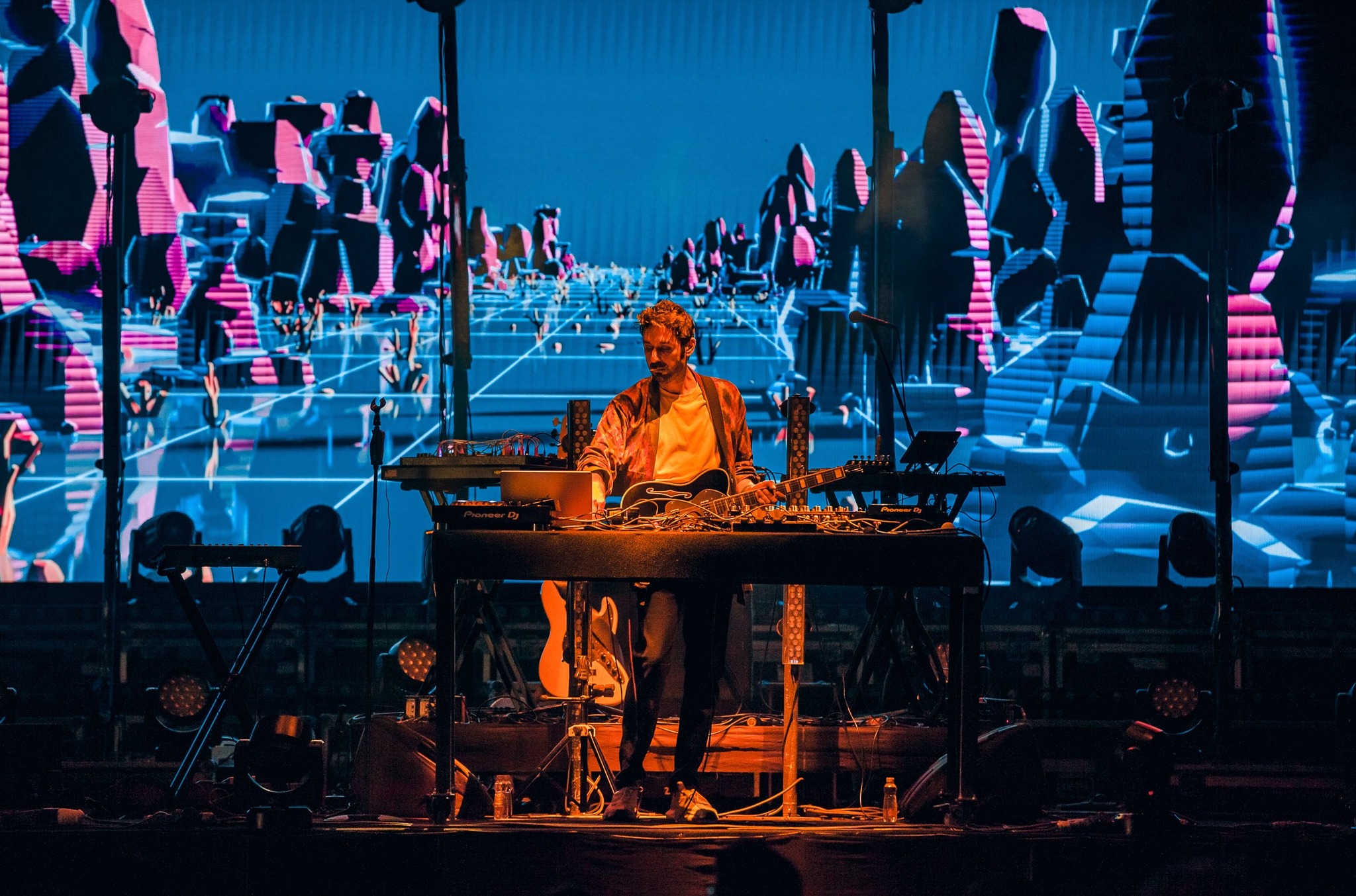 Dance erases boundaries… Between body and soul. Between space and time. Between culture and nature. The transcendent power of dance to overcome barriers and set people free was a topic that came up often in our discussion with this London- based lighting designer. Its spirit runs deep within his work, not through the illumination of choreographed steps on a dancefloor, but from the ever-changing flow of colours and patterns that mark his designs.
Dance erases boundaries… Between body and soul. Between space and time. Between culture and nature. The transcendent power of dance to overcome barriers and set people free was a topic that came up often in our discussion with this London- based lighting designer. Its spirit runs deep within his work, not through the illumination of choreographed steps on a dancefloor, but from the ever-changing flow of colours and patterns that mark his designs.
It is through this movement of light that Will Thomas works his transformational magic. And what magic it is! This is especially true when he lights the music of longtime client Bonobo (Simon Green), the multi-instrumentalist superstar who has attracted a global following by taking audiences on unforgettable journeys to new realms of imagination.
Thomas’ light flows seamlessly with his client’s ambient music, reflecting its sound, and supporting its narratives, all while pulling the audience closer to its meaning. Sometimes, Thomas does this by obscuring the artist on stage for a period to better focus on the audience; the lines between the two are often blurred in his “collective” design approach, which places an emphasis on the shared experience.
Like dance itself, a Bonobo show revolves around freedom and spontaneity. Just as no two dances are ever quiet the same, every Bonobo show is different. Keeping pace with this level of change has its challenges, but Thomas would have things no other way. It is precisely what makes the dance of light special
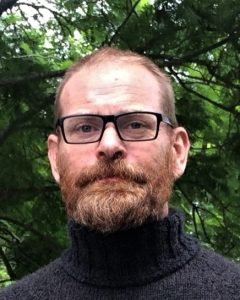
At The Lost Village show, you created side lighting that at times engulfed Bonobo and the other artists in light, so that their forms were absorbed by illumination. This often turned them into silhouettes, that instead of being shadowy, were brilliantly illuminated. Can you tell us a bit about why you like to erase the boundaries between the artists on stage and your light?
“My goal at a Bonobo Show is always to allow the audience to dance and react to the music in whatever way they feel. The expression “Dance like no one is watching” normally means dancing like no one is watching YOU, but by linking certain songs with consistent colours and loosing performers in shadow I feel it allows the audience to dance and just enjoy the music without feeling they need to be WATCHING the musicians or DJ.
“Although Bonobo is a live band, there is a danger with some electronic music that the performers can look like they are just updating Facebook on their laptops.
The brief from Simon Green (aka: Bonobo) has always been to create looks with colours and space where the performers exist mysteriously within that overall look, allowing the audience and their dance become the center of attention.”
Along those lines, what are your thoughts in general on side and back lighting and the role they play in your designs?
“Once the audience is dancing, I don’t want to distract them with an over-lit solo or a bright vocal, I’ll always want the performers on stage to remain as part of a collective, rather than a soloist with a backing band. Side light is a great way to draw the audiences attention to the changes without destroying that illusion with too much flattening front-light.Back lighting is very important for photographers and camera operators, especially if they are taking shots from down in the pit. I want each performer on camera silhouetted with back light, as it gives the image three dimensionality, depth and colour. However, because their faces aren’t fully lit the players still remain part of the overall look.

You’ve said that on Bonobo’s Fragments tour, you’re striving to create “this beautiful undertone of nature” with your lighting. Can you tell us a bit about how you’re doing this?
“The visuals for the Bonobo show are provided by an American company called Strangeloop. Inspired by Simon Greens experience and taste there a lot of the images are of nature which I try and match or juxtapose the colours of the video images with the lighting. The space between the colours is important too, images of trees and imagined spaces have lots of darkness in between the colours. Then, the imagery of deserts and wide open vistas present a flatter field of colour with less black disrupting them allowing for wider lighting looks.
“There have been shows where we are playing in nature itself: botanical gardens, outdoor festivals or actually in the American desert itself. There, as always, I like to draw attention to the environment that the audience are in and use it as a counterpoint to the visuals and stage.”
On the opposite side of the coin, we see that you created some very stark industrial looks for Bonobo’s appearance at The Watergate club in Berlin. We know that every Bonobo show is unique, covering a wide range of themes like this: so, what kinds of challenges does this present to you as a designer and how do you meet them?
“The event is always unique; our five night residency at the Royal Albert Hall proved this!
The show and lighting set up may be the same, but each night the audience is always different, and they react differently to different songs. Early on in the tour, we tried out lots of different looks, but now even though we have a uniform looks for each song and an overall look for the show, I still like to pick out the individuality of the venue that night.
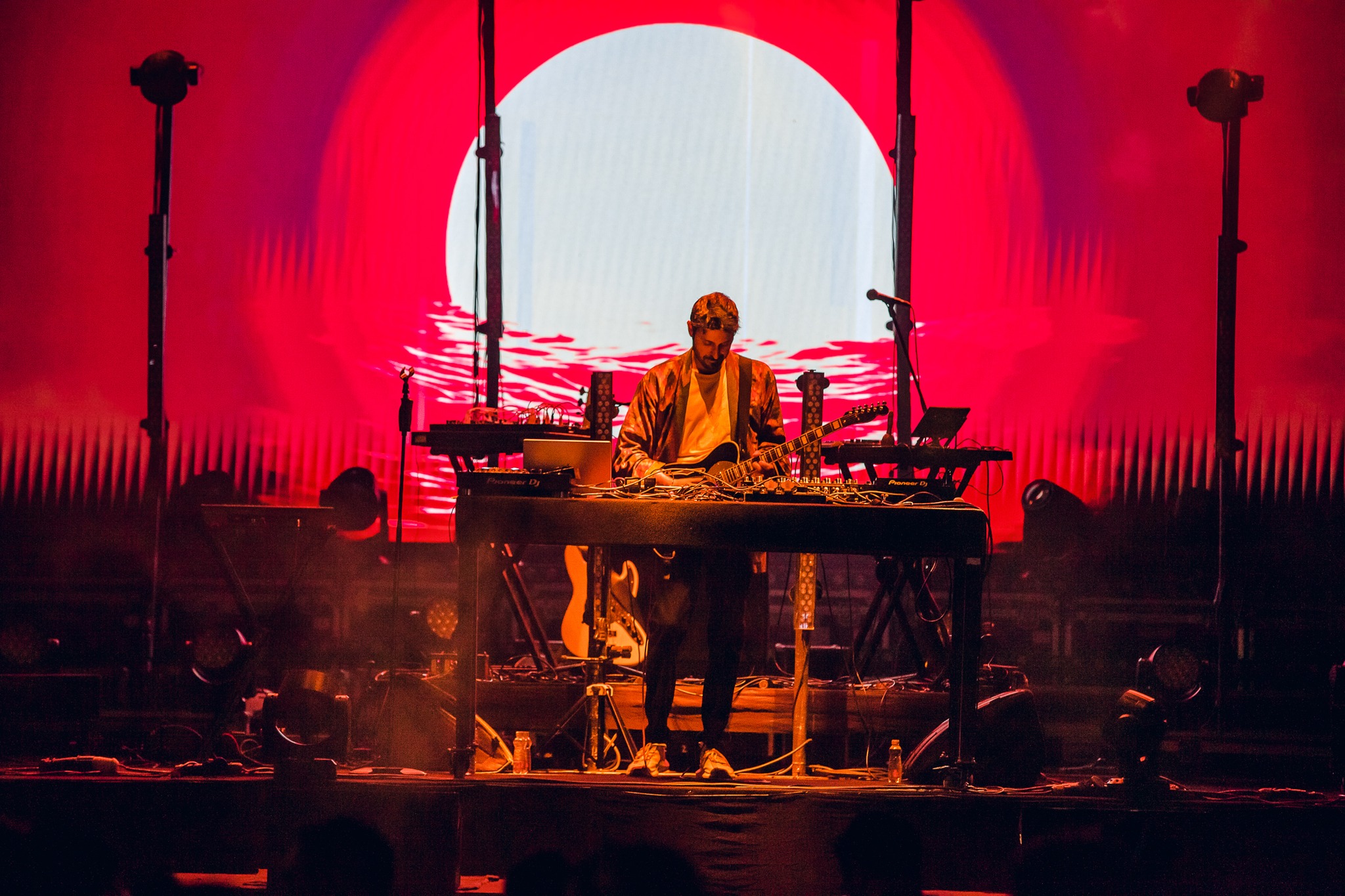
“Certain venue environments can accentuate the mood of a tune and it’s up to the lighting designer to use and respond to that. At some venues this can be as simple as illuminating the grand pillars around the gods, lighting a previously unappreciated industrial wooden ceiling or the industrial architecture around the proscenium. The objective is the same, to bring the audiences attention to the uniqueness of the moment and the space they are in, at that particular time on that particular night.”
You’ve been to so many different places on tour. Do you have a favorite city? A favorite venue?
“There’s nothing like the feeling of taking a show home and playing to the home crowd, but I also love the excitement of playing a show in an unfamiliar venue and hopefully converting a crowd of people who are not yet fans.”
Bonobo’s shows arealso relatively long, running two-to-three hours. How do you keep these shows interesting? Do you see them as a stories with a beginning, climax and conclusion?
“Very much so. The dynamic of the show is very important and for the Fragments tour it starts with very simple looks, one type of fixture, in just one colour. As it builds more and more fixtures and looks are combined. Then, about two thirds into the set, there is a moment where all is revealed through an excessive amount of front light. This allows the audience to see that the music they have been dancing to has been created by real people on stage with real instruments. This allows everyone to reset as we all step back into darkness and can start building looks again. “There’s nothing unconventional about this type of additive lighting narrative and on other shows. With ‘Sea sick Steve’ for example, I challenged that convention; the show can end with just a single light illuminating the performer”.
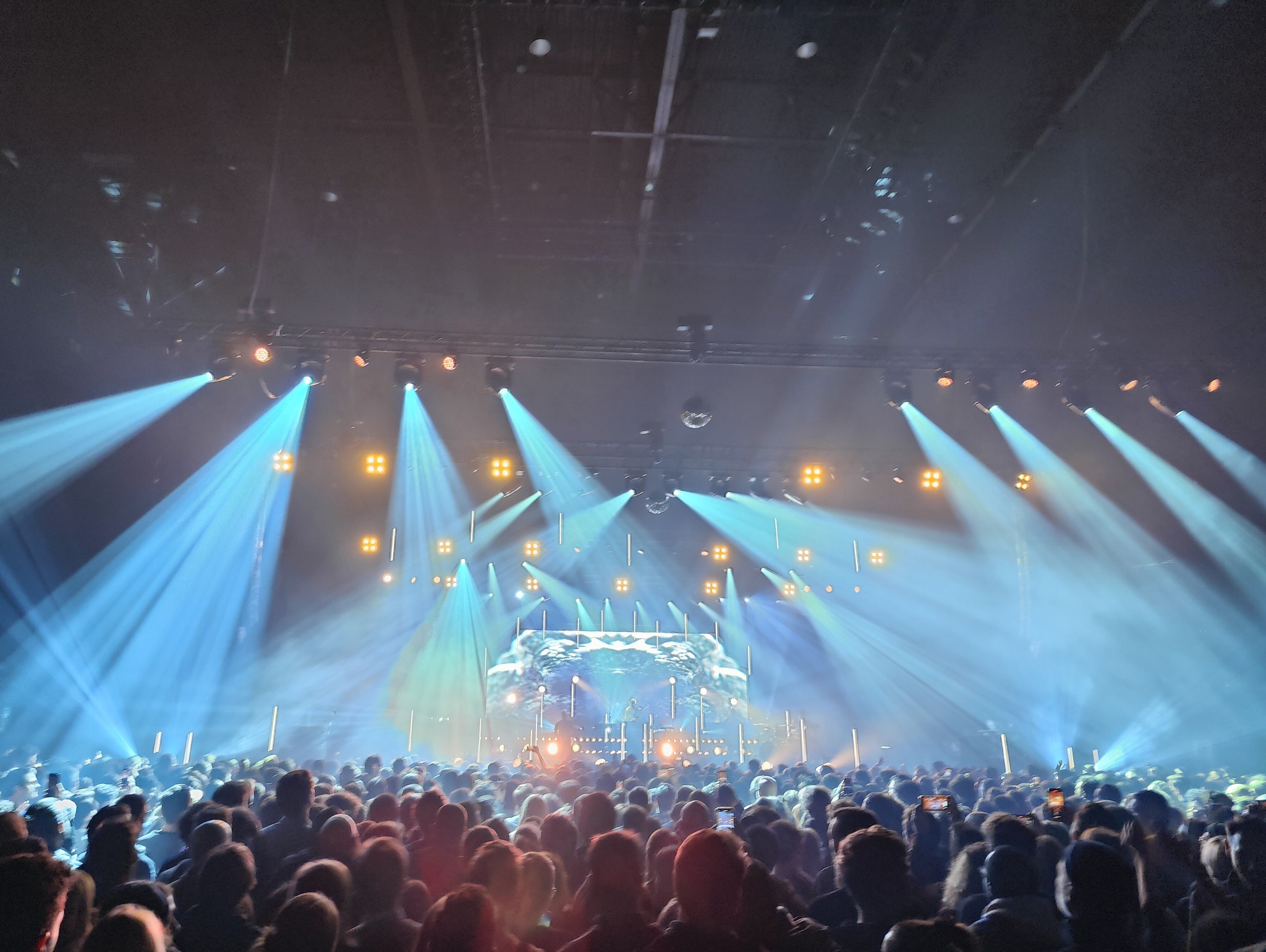
How do you get inspired creatively when you begin working on a design for the first time?
“With the music.”
Do you ever procrastinate at the start of a project?
“Yes! Always. There’s so many lighting fixtures to choose from these days and hours can be lost “researching”- watching production videos of the new swanky2023 or looking at other people’s stage shows on social media, but I’m very aware that even with a well appointed touring floor package and a well designed overhead rig, everything can change the moment the band walk out on stage. “If it’s cold outside I’ll often light the auditorium quite brightly, people coming into the room will see old friends and new faces, it makes them feel good about coming inside. On the other hand I recall one show on a beautiful spring evening after a long European winter where the entire audience was outside enjoying the first warmth of the sun. The walk-in look for that particular show was incredibly dark and mysterious giving the audience a real change of atmosphere from the environment they had been in outside. For me the start of the project really is the moment the doors are open.
So, given that ,you do a lot of busking. Is that fair to say?
“The show is busked. I don’t even know what timeline is! Although the band are playing to click, there are always variables to consider such as the dimmer curve of a venue fixture or a sudden change of direction by the band. Busking the show allows me to react to those variables in a way that timeline doesn’t.
“In the show each song normally has ten faders because I only have the standard ten fingers. Most faders will have intensity, colour, position and beam looks with the first two faders on my left normally being my “bump” buttons, leaving my right hand to consider modifications of colour and position within the programmer.
“I’ll often have a third fader with just the intensity of the fixtures in the first two faders. This means I can set this at around 35-percent, and then by using the flash button master, I can achieve a more subtle bounce for the slower numbers. Next to that may be a chase, which if I want to adjust the speed of, I will select that chase and play with the speed/fade encoders. The next two faders will generally have a stack of the front or side key light and there will be a single fader for mode2 movements (fader controlling speed and size) Then blinders or other looks, and finally on fader ten there will be video intensity.
“If I am busking a show for a band I’ve never seen at a festival, my pages will look similar but the positions, colours, and beams will all be in the programmer and the faders will only have intensity in them.
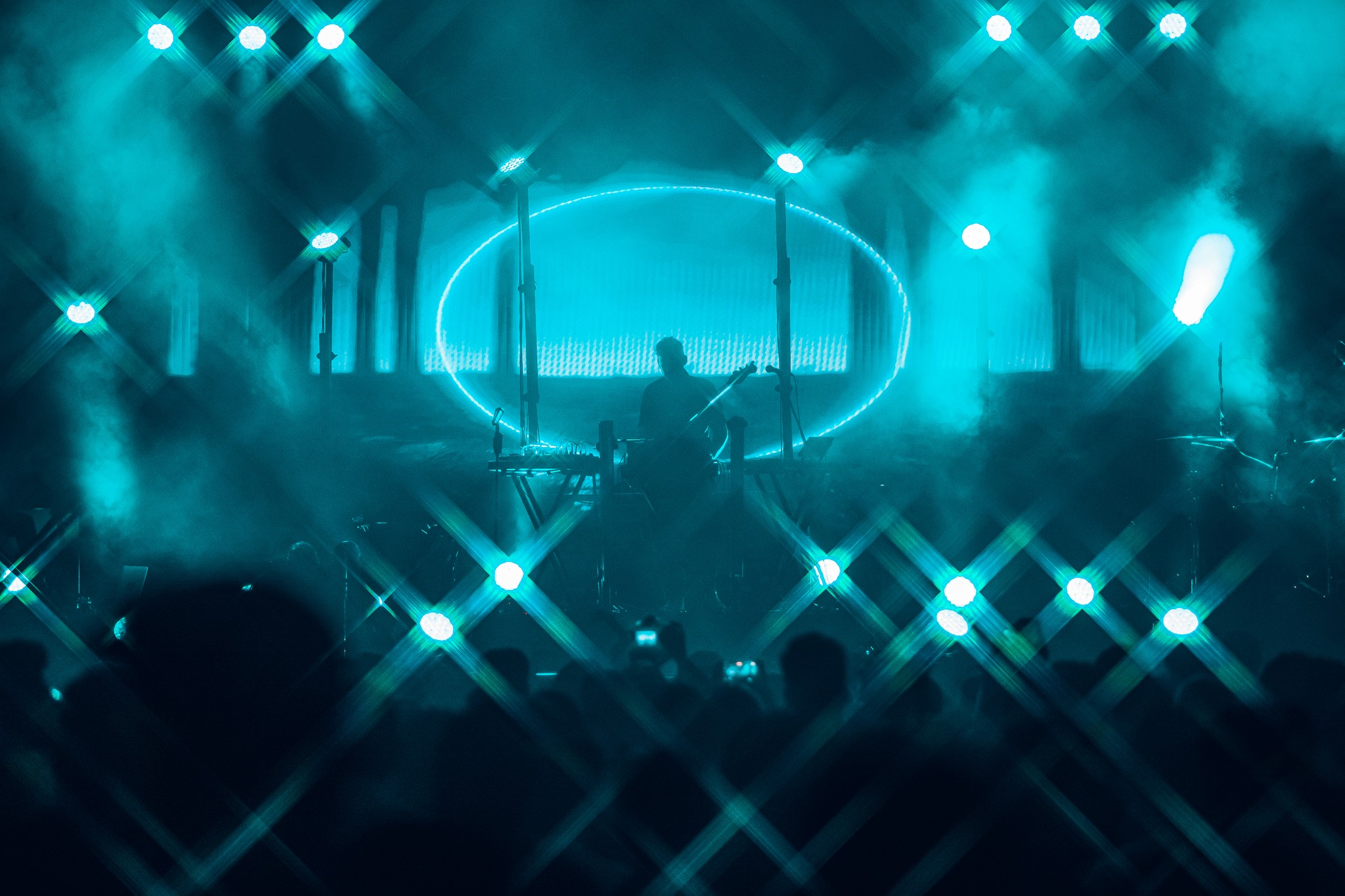
How involved in the lighting design process does Bonobo get?
‘There are certain looks he likes and certain looks he doesn’t. Over the years we have developed a dialogue where we decide that some looks are ‘let go” after a few concerts. Although he’s very visually minded, I think what matters too him is how it feels, so we will normally communicate after the event. We’ve also communicated during a show. I once received a text from him shouting “DUDE!!!” though I think this was more to do with an over functioning smoke machine than the collaborative design process.”
What are the sort of things he focuses on when evaluating the merits of a lighting design?
“Both Bonobo and his management are interested in the lighting design and we often try and have a different hero fixture for each tour. The lighting design and fixture selection is combined with the video design. We’ve always tried to do something more than just a big uncreative slab of video wall with lighting fixtures around it. This can be breaking up the slab of the video wall or putting fixtures in front and behind it. After all, a Video wall is also one big light and by breaking it up you get create more sources of light. I’m interested in using the physicality and architectural elements of the screen as well as the imagery it projects.
In many shows you use lighting to reflect the message or imagery of the video content. When you do this, are there certain aspects of the video like colour or characters featured in it that you focus on to make sure that the lighting reflects is?
“The lighting designer always has the choice of creating complimentary colours to a visual or deliberately doing something different. However, sometimes the video is enough and all the LD has to do is use it at maximum brightness to create the atmosphere for that particular song. You can pick out performers in that song with minimal light, but it’s a good dynamic within the show to allow one or two songs to be almost entirely lit by the video wall.What do you think is the single most important lighting fixture you can have in your toolkit?“In my opinion, there are only three types of light: a sharp edged beam, a soft edged wash and then ‘something else.’ Personally I love using festoons or single lamps spread out over the stage and venue. They are so simple but so responsive. A single lamp can glow at warm 10-percent or flash at bright 100-percent. If it’s too bright or to dim change it by one percent, and it will look different. Everyone loves the twinkle!
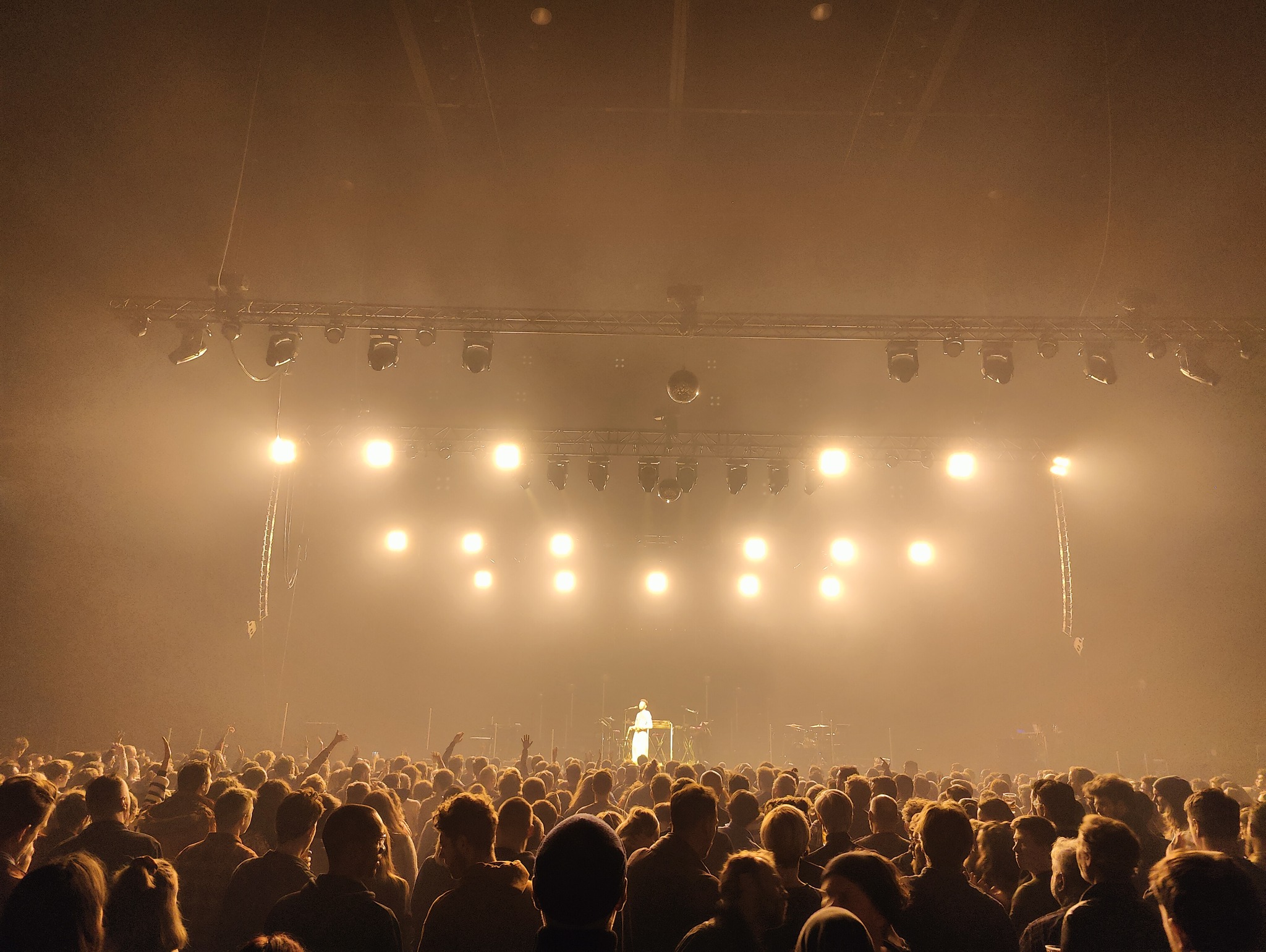
In many shows when you do audience lighting, you light up the entire room instead of just lighting just the crowd. What is your thinking there?
“I think its good to appreciate the difference between using blinders and using spots and washes to light a crowd. Spots and washes in a club or rave can flash the attention onto a small part of the audience, I like my dance floor lights to come from any other angle than from the stage. Light from behind, above or from the side of the dancing audience illuminates a small group or even an individual. It allows the audience tosee and react to and as individuals and even if the stage is far away, it makes the audience out on the dance floor feel included in the event. When you light an audience with blinders from the front truss, it is a much flatter light and makes people feel less like individuals but more part of the same collective.”
You often go with monochromatic colour schemes. Why is that?
“Even if they can’t describe it, colours mean a lot to people. The worst lighting I’ve seen is when stages have LEDs cycling through all the colours with no relevance to the tempo or rhythm of the music. Even if you don’t associate meaning to a particular colour when all the colours are flashed in one song it doesn’t leave you anywhere to go. I like to use one or maybe two colours per song and use changes in colour to establish a change in song and its attendant mood. Just because your LED par can provide you with infinite colours doesn’t mean you have to use all of them all the time.”
So, how did you get started in lighting?
“My parents used to put on a show every summer and I was involved with that from the time that I could choose between a spanner and a teddy bear. At secondary school I was a terrible double bass player in the orchestra but I liked to do shows so I moved backstage and haven’t looked back since. I did work experience with Stage Electrics Exeter and then studied Theatre design at Wimbledon School of Art. Whilst there I started working for Stage Miracles and have always allowed my experiences in the back of the truck to affect the way I design the shows I do now.”
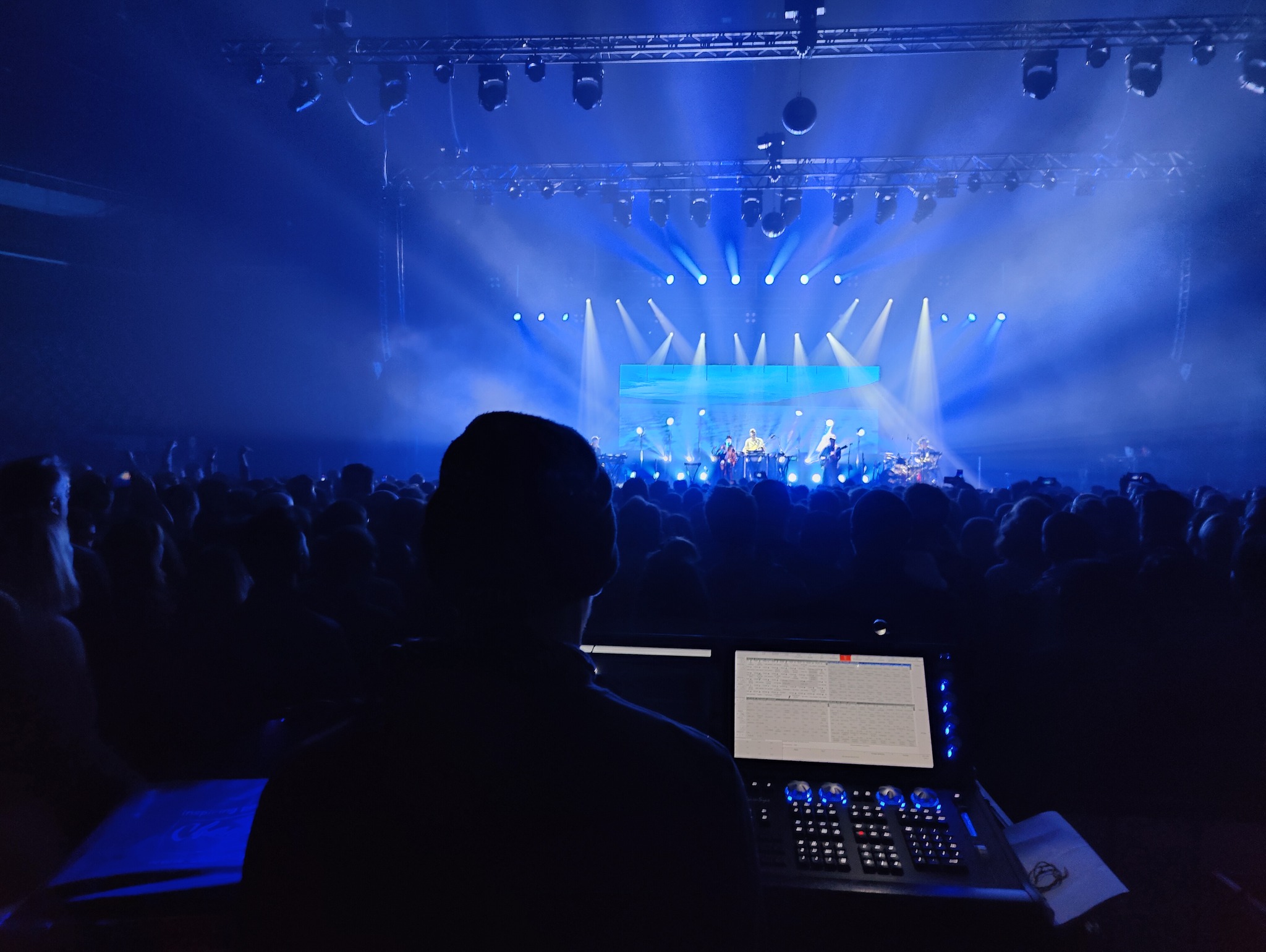
What do you think you would have done if you didn’t become a lighting designer?
“I would have liked to have been an illustrator. I was told at college (back in the early 90’s) that computers would play no part in lighting design and as a result I made sure my drawing skills were really good. I’m always grateful that for that as I can still hand draw my designs before handing them over to the excellent CAD workers that I’ve used on bigger shows. Regardless of language or cultural differences being able to communicate your ideas on pencil and paper or with a sharpie on the back of a brown paper bag has always been a feature of my day to day work.”
Your collaboration with Bonobo is legendary. How did you meet?
“I was lucky enough to be working at the Big Chill Festival back in the 2000’s where Bonobo played. Their drummer, who has worked as a lighting tech in the past, and sound engineer, who I had worked with on another tour, recommended me for the tour and I met Bonobo for the first time at a rehearsal studios. The next time I met him we were all on a tour bus in America!”
Why do you think your relationship with him has been so successful?
“I listen to the music, not just the music that Bonobo play, but the music they listen to and so can react to not only the music they are playing but the music that they are thinking about. Over the time we’ve been touring we have seen the rise of social media and I always try and make sure the big songs look good on an iPhone. If the show looks good on the night the people there will have a good time, if they look good on an iPhone they can share it forever with their friends and the rest of the world.”
What is the one thing you want people to know about you as a lighting designer?
“Reactive control is most important factor of any lighting designer’s work.
It doesn’t matter if your looks are really simple or incredibly complicated, if you can’t react to the music then you’re not really in control. If I was able to make it dark in the dark bits and light in the light bits then I know I’ve had a good show.”